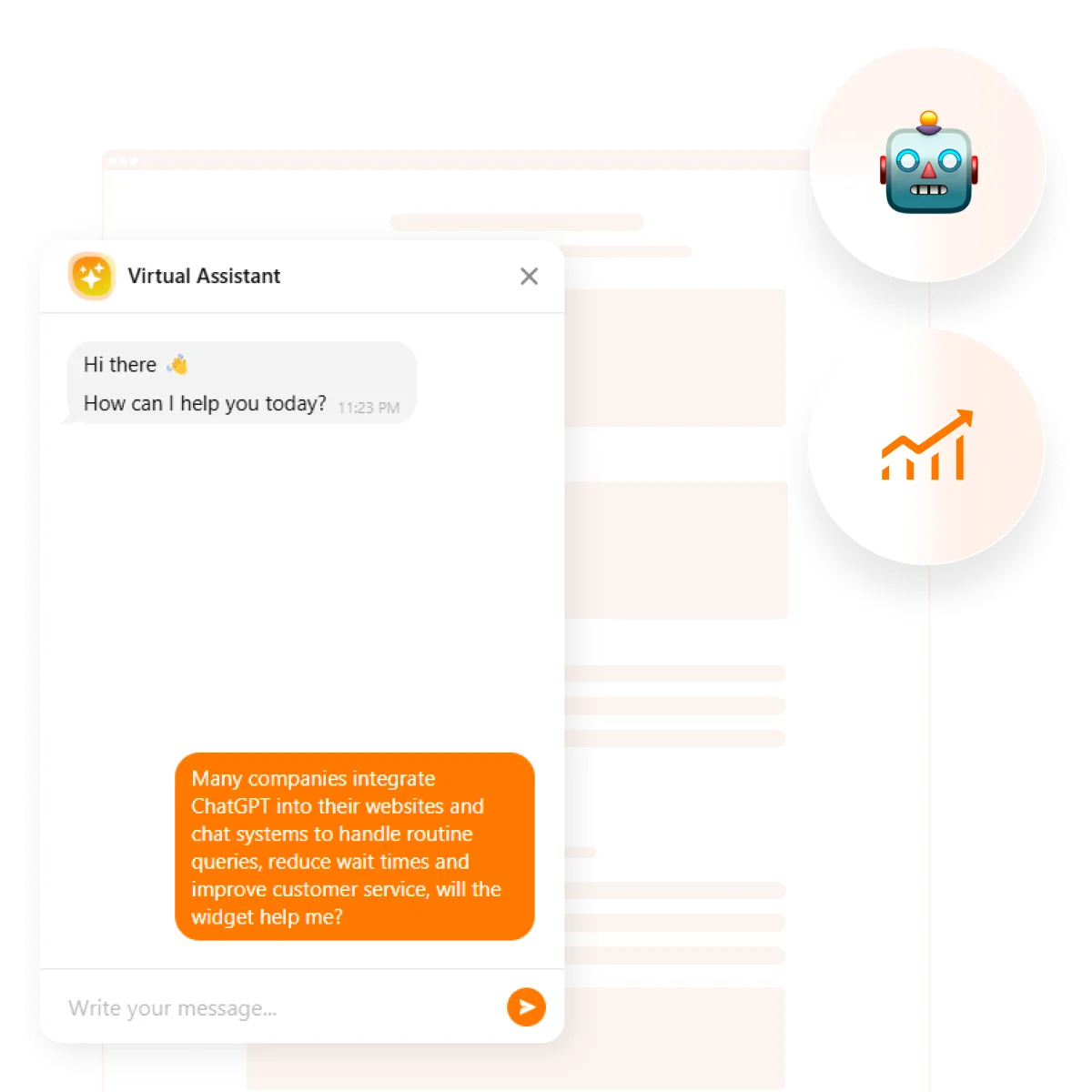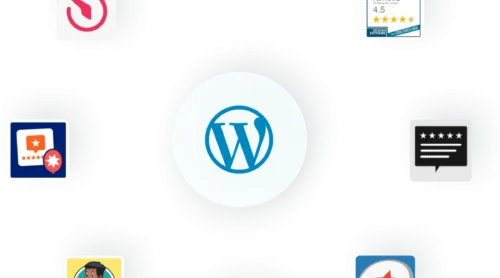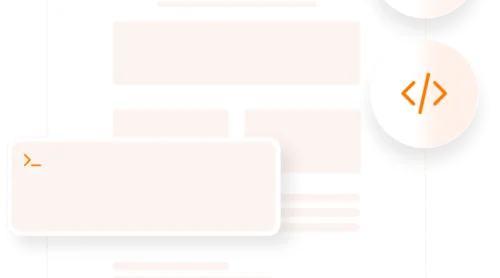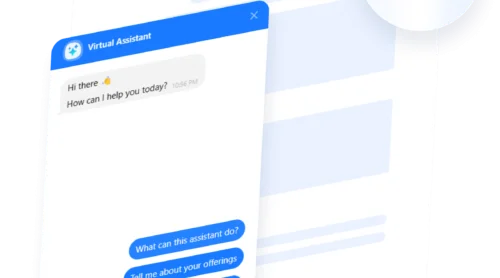ChatGPT, developed by OpenAI, is one of the most groundbreaking innovations in artificial intelligence that revolutionized how individuals and businesses interact with technology. Leveraging cutting-edge natural language processing, ChatGPT has made AI-powered conversations more accessible, dynamic, and useful than ever before.
Since its launch, ChatGPT has experienced a meteoric rise in popularity. With millions of users worldwide and rapid adoption across industries, it has set new benchmarks for AI applications, reshaping how people leverage technology in their daily lives.
In this article, you’ll learn the remarkable statistics behind ChatGPT’s growth, user demographics, revenue, and global impact.
Key ChatGPT Statistics
ChatGPT’s rapid rise to prominence has been nothing short of extraordinary, reinforcing its position as one of the fastest-growing and widely used AI platforms globally.
A Record-breaking user base
From its inception, ChatGPT has achieved unprecedented milestones in user adoption. Within just five days of its launch, the platform reached 1 million users, setting a record for the fastest user acquisition in digital history.
As of December 2024, there are around 300 million ChatGPT weekly active users. Collectively, these users send more than 1 billion messages daily, showcasing how deeply integrated the platform has become in personal and professional workflows.
Strong engagement metrics
ChatGPT users spend an average of 6 minutes and 25 seconds per session, a clear indication of the platform’s ability to provide quick, relevant, and engaging responses. Additionally, visitors typically explore an average of 3.67 pages per session, which demonstrates their active interest in utilizing multiple aspects of the platform.
ChatGPT has a bounce rate of 37.07%, meaning that the majority of users go beyond their initial entry point to explore the platform further. This high retention rate reflects ChatGPT’s effectiveness in addressing user needs, whether they involve answering questions, drafting content, or performing other tasks.
ChatGPT traffic
The platform’s global reach is evident in its traffic metrics. As of December 2024, per Similarweb, ChatGPT has over 3,7 billion visits in a month with an average session duration of 6 minutes and 25 seconds. These figures highlight the platform’s widespread recognition and sustained popularity.
Geographically, the United States leads ChatGPT’s user base, contributing 17.07% of its traffic, followed by India at 8.41%. This international distribution underscores ChatGPT’s ability to cater to a diverse range of users, from English-speaking markets to emerging economies.
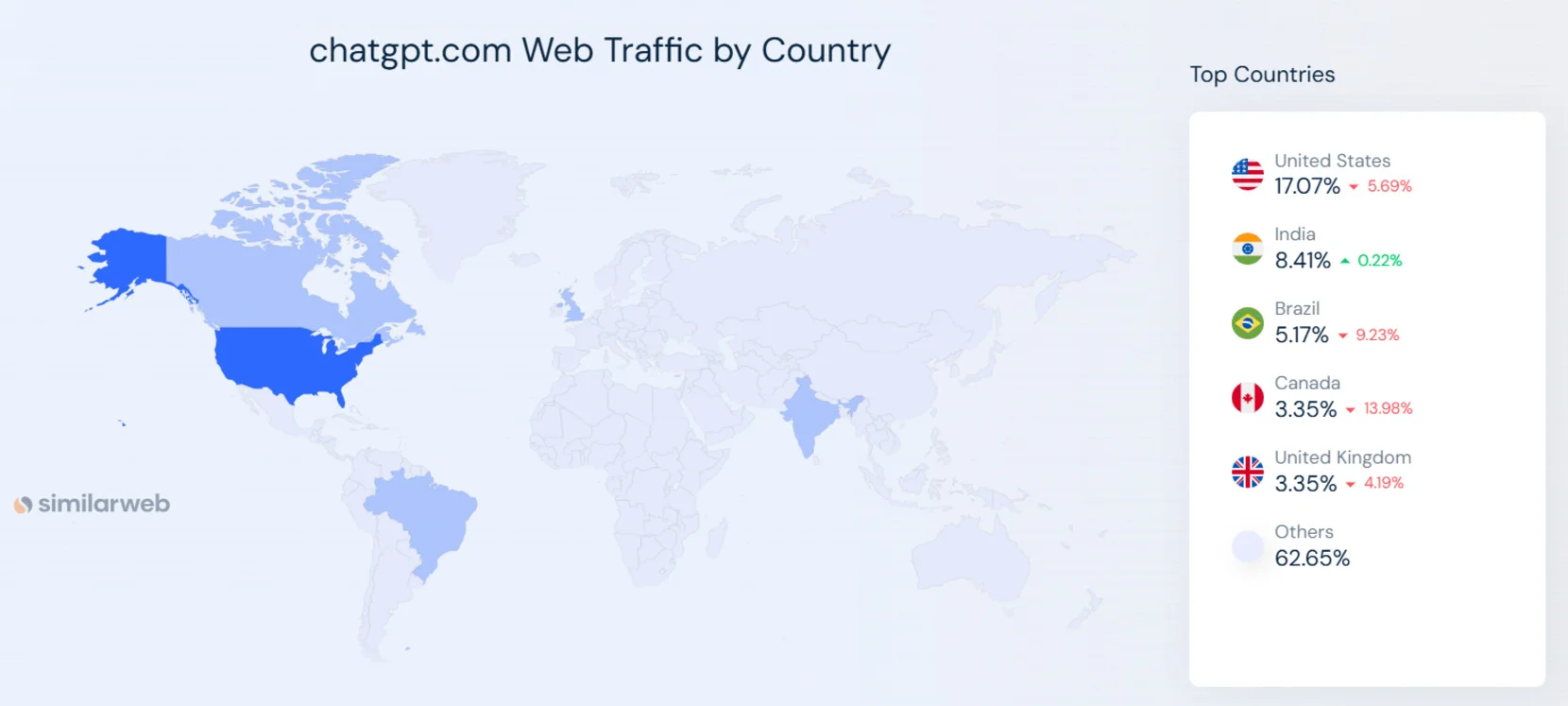
Additionally, ChatGPT’s traffic is largely driven by organic search and direct visits, which reflect its strong brand presence and user loyalty. Many users also discover the platform through social media platforms and word-of-mouth recommendations, emphasizing the role of community-driven growth.
Future outlook
As ChatGPT continues to expand, its growth trajectory shows no signs of slowing down. The combination of a large, engaged user base, significant global reach, and a diverse demographic ensures that the platform will remain a dominant force in the AI landscape. With innovations in GPT technology and increasing adoption across industries, ChatGPT is poised to continue its impressive growth in the coming years.
Projections indicate that ChatGPT’s user base will surpass 1 billion users in 2025, driven by continual improvements in the platform and OpenAI’s investment in infrastructure and AI technology. These numbers underscore the platform’s ability to adapt to an ever-expanding market and maintain its appeal among diverse user groups.
ChatGPT Growth Timeline
Below is a detailed look at ChatGPT’s user growth over time, its pivotal moments, and how it became a household name in the AI landscape.
Launch and early adoption
- November 30, 2022: ChatGPT officially launched as a free-to-use AI chatbot, marking the beginning of its journey. As mentioned earlier, within just 5 days, it reached 1 million users, an achievement that highlighted its immediate appeal and usability.
- December 2022: By the end of its first month, ChatGPT had garnered approximately 57 million users, fueled by organic interest and global media coverage. Its ability to answer complex questions, assist with creative tasks, and simplify workflows drove rapid adoption across various demographics.
When did ChatGPT become popular?
ChatGPT popularity began in the early 2023, particularly after users started sharing their experiences and use cases on social media platforms. The viral nature of these posts amplified awareness, making it a trending topic in technology and productivity circles.
Key factors contributing to its popularity included its free accessibility, wide-ranging functionality, and the novelty of engaging with conversational AI at such a sophisticated level.
ChatGPT usage over time
The below table provides a clear timeline of ChatGPT’s growth and evolution, highlighting key updates and milestones that solidified its place as a dominant AI tool.
| Date | Milestone | Details |
|---|---|---|
| November 30, 2022 | ChatGPT Launch | OpenAI launched ChatGPT to the public as a free research preview, quickly gaining attention for its conversational AI capabilities. |
| December 5, 2022 | 1 Million Users | ChatGPT reached 1 million users within just 5 days, setting a record for rapid adoption of an AI platform. |
| January 2023 | 100 Million Users | ChatGPT surpassed 100 million monthly active users, becoming the fastest-growing platform in history. |
| February 1, 2023 | ChatGPT Plus | OpenAI introduced ChatGPT Plus, a subscription plan priced at $20/month, offering faster response times, priority access during peak times, and access to new features like GPT-4 (introduced later in March). |
| March 14, 2023 | GPT-4 Release | OpenAI launched GPT-4, a major update that brought multi-modal capabilities, improved reasoning, and greater contextual understanding. |
| March 2023 | ChatGPT Plugins | OpenAI implemented plugins for ChatGPT, including browsing, file uploads, and API integration, allowing users to expand its functionality. |
| May 2023 | iOS App Release | OpenAI launched the official ChatGPT app for iOS devices, making the chatbot accessible on mobile platforms for the first time. |
| July 2023 | Android App | The ChatGPT app became available for Android users, further broadening its global reach. |
| July 2023 | Custom Instructions Feature | OpenAI added the “custom instructions” feature, letting users personalize how ChatGPT interacts and responds, tailoring the AI experience to individual preferences. |
| September 2023 | Multi-Modal and Voice Capabilities | GPT-4 gained image processing abilities, enabling users to upload and analyze visual content. Voice interactions were also introduced, allowing users to have spoken conversations with ChatGPT. |
| November 2023 | OpenAI Developer Conference (Dev Day) | OpenAI hosted its first developer conference, unveiling new updates and APIs to enable developers to integrate ChatGPT into apps and services more easily. |
| January 2024 | Prolonged User Growth | OpenAI confirmed that ChatGPT had consistently surpassed 200 million weekly active users, cementing its place as one of the most used AI platforms. |
| December 2024 | 300 Million Weekly Active Users | OpenAI announced that ChatGPT was managing over 1 billion messages daily and had 300 million weekly active users. Plans for building proprietary data centers to scale were also shared. |
While 2023 was a monumental year for ChatGPT with groundbreaking features and launches, 2024 saw a more mature phase of growth and refinement.
ChatGPT growth drivers:
- Ease of access. The decision to launch ChatGPT as a free tool made it widely accessible, reducing barriers for users worldwide.
- Community contributions. Viral examples of ChatGPT’s applications spurred interest and experimentation, especially in fields like education and content creation.
- Frequent updates. OpenAI’s regular updates and enhancements, including the ChatGPT API integration, kept the platform fresh and relevant.
Current usage and trends
ChatGPT has established itself as a reliable tool across diverse domains. It’s used by professionals for tasks like automating workflows and generating ideas, while students use it for learning and research purposes. Its widespread appeal continues to fuel exponential growth, ensuring that ChatGPT remains a leader in AI innovation.
The growth of ChatGPT is a testament to the power of AI-driven tools in reshaping how we work, learn, and communicate. With its rapid adoption and sustained popularity, ChatGPT is poised to remain at the forefront of AI technology for years to come.
ChatGPT User Demographics
ChatGPT has quickly become a versatile tool, appealing to a broad spectrum of users from diverse demographics. Its accessibility, wide range of capabilities, and continuous improvements have made it an essential tool for various tasks.
Who uses ChatGPT the most?
ChatGPT’s user base spans multiple demographics, with the majority of its users falling within the 18-24 age group. It’s no surprise since younger generations typically embrace new technologies more quickly than older ones.
A substantial number of 25-34-year-olds also make up a significant percentage. These groups are often more likely to embrace new technologies and incorporate them into both personal and professional tasks. This is reflected in ChatGPT’s engagement, as users often return to the platform to solve problems, automate repetitive tasks, or generate creative ideas.
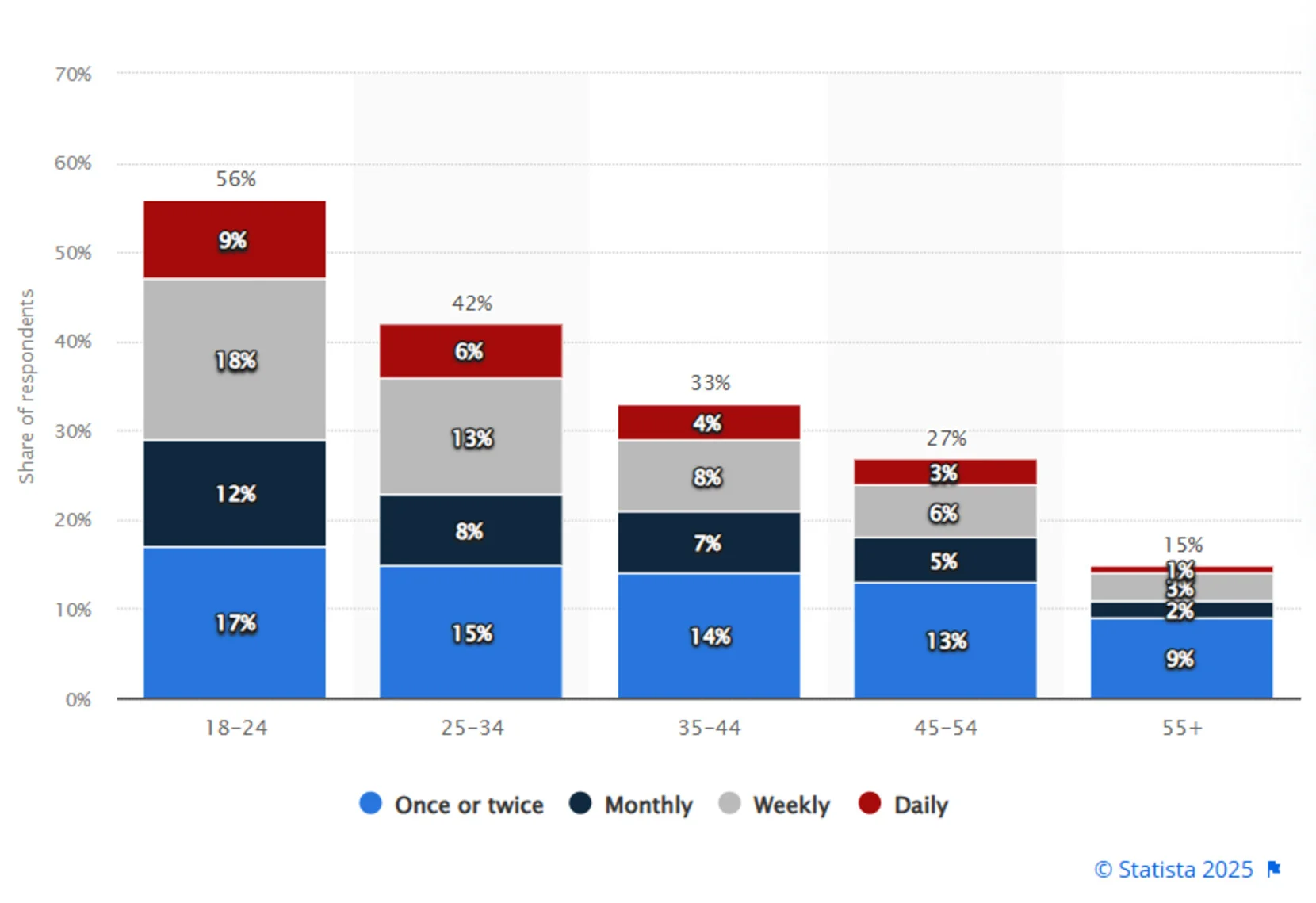
As of the latest data, ChatGPT’s user base is skewed toward male users, who account for 66% of the user base, compared to 34% female users. This gender gap has raised concerns about biases in AI tools, with experts suggesting that platforms like ChatGPT might unintentionally reinforce workplace inequalities
ChatGPT’s usage in the workplace has grown significantly, with industries such as marketing, technology, and education leading in adoption. Employees commonly use it for tasks like content creation, coding assistance, and streamlining administrative work, reflecting its versatility across sectors.
Popular ChatGPT Use Cases
ChatGPT’s versatility is one of its key strengths, with users leveraging it for a variety of personal, educational, and business tasks.
Let’s see some of the most common ChatGPT use cases.
Education
ChatGPT is widely used in educational settings by students, teachers, and institutions to support learning and streamline teaching methods. Its ability to provide personalized assistance and simplify complex concepts has made it a favorite tool in the classroom.
- Homework help. Students use ChatGPT to generate ideas, summarize lengthy articles, and explain complicated topics in simple terms, ranging from scientific theories to historical events.
- Writing assistance. It helps students draft essays, write research papers, and create creative content like poetry or stories, ensuring clarity and engagement.
- Language learning. Learners practice conversational skills, get real-time grammar corrections, and use ChatGPT for translations, making it an essential resource for multilingual education.
- Tutoring and teaching. Teachers and tutors incorporate ChatGPT into lesson planning, quiz creation, and even to provide additional support to students needing personalized learning paths.
Business
ChatGPT has become an essential tool for businesses, enabling professionals to automate processes, boost creativity, and enhance productivity across various roles.
- Customer support. Companies use ChatGPT to automate responses to frequently asked questions, providing 24/7 assistance and improving customer satisfaction. For more complex issues, it supports representatives by drafting accurate, quick responses.
- Content creation. Marketers and content creators rely on ChatGPT to write blog posts, product descriptions, email templates, and ad copy, drastically cutting the time needed for content production.
- Market research. It helps professionals extract insights from complex reports, summarize market trends, and brainstorm innovative business ideas tailored to their industry.
- Project management. Product managers use ChatGPT to draft specifications, track progress, create workflow templates, and ensure communication between team members.
- Internal communication. ChatGPT assists businesses in crafting professional emails, internal memos, and meeting agendas to enhance workplace efficiency.
Tech and Software Development
The tech industry has embraced ChatGPT for its ability to simplify programming and project management tasks. It serves as an intelligent assistant to software developers and IT professionals.
- Coding assistance: ChatGPT helps developers write, debug, and optimize code in various programming languages, making it an indispensable tool for both beginners and experts.
- Error debugging. Developers use ChatGPT to identify and fix errors in code, saving hours of troubleshooting time.
- Technical documentation. Teams utilize it to generate detailed, accurate documentation for software projects, ensuring clarity for future reference.
- AI-powered prototyping. It assists in brainstorming and creating initial code prototypes for new applications or software features.
Marketing and Social Media
Marketing professionals and social media managers rely heavily on ChatGPT to streamline their content production and maximize creativity in their campaigns.
- Content marketing. ChatGPT generates high-quality blog posts, long-form articles, and press releases, ensuring consistent and engaging output.
- Social media content. It helps social media managers draft posts, write captions, and come up with creative ideas for campaigns, saving hours of manual effort.
- Ad copy and strategy. Marketers use it to test and create ad copy optimized for different platforms, ensuring relevance to target audiences.
- SEO optimization. ChatGPT assists in keyword research and crafting meta descriptions, helping businesses boost their online presence.
Healthcare
In the healthcare sector, ChatGPT has found applications that benefit both patients and healthcare providers. Its ability to process and present information in accessible ways makes it a helpful tool for communication and education.
- Patient communication. Healthcare professionals use ChatGPT to provide clear and accurate responses to patient questions about treatments, procedures, and health conditions, helping patients feel informed and confident in their care.
- Medical training. ChatGPT supports medical students and trainees by breaking down complex medical concepts into simpler terms and generating study materials like quizzes or flashcards to enhance learning.
- Workflow optimization. By automating the management and analysis of electronic medical records, ChatGPT streamlines workflows for doctors and healthcare staff, saving time and improving efficiency in clinical settings.
- Health education. It also plays a role in educating the public by offering accessible and accurate information on health topics, promoting awareness and better self-care.
Customer Service
ChatGPT is widely used in customer service departments to enhance efficiency and provide consistent support.
- Automated FAQs. Many businesses integrate ChatGPT into their websites and chat systems to handle routine inquiries, reducing wait times and improving customer experience.
- Personalized assistance. Customer service representatives use ChatGPT to craft tailored responses for complex issues, ensuring professionalism and speed.
- Support documentation. It helps create detailed guides and FAQs for customers, empowering them to solve issues independently.
- Website chatbots. ChatGPT can also be integrated into website chatbots to interact with customers in real-time, answering questions and resolving issues seamlessly, improving customer engagement and satisfaction.
Build your AI-powered chatbot with our intuitive editor in a matter of minutes!
Personal Tasks and Entertainment
Beyond professional use, ChatGPT can also be a helpful tool for managing personal tasks. Its flexibility makes it a go-to solution for various daily needs.
- Personal assistant. Users rely on ChatGPT to set reminders, create to-do lists, plan schedules, and even assist with decision-making for personal projects.
- Learning and self-improvement. Many individuals use it for personal learning, from acquiring new skills to researching topics of interest.
- Entertainment. ChatGPT engages users by creating jokes, solving riddles, telling stories, and even role-playing scenarios for fun and leisure.
- Creative projects. People use ChatGPT for brainstorming and developing ideas for hobbies, crafts, or writing projects.
ChatGPT’s wide-ranging capabilities allow it to cater to diverse needs, making it an indispensable tool across industries and for personal use. Its growing popularity highlights its role
ChatGPT’s user base is diverse, with widespread adoption across age groups, professions, and countries. It has proven itself as a valuable tool for students, educators, business professionals, and everyday users. Its ease of access, range of capabilities, and ability to cater to different industries have made it a staple in both professional and personal workflows. The future of ChatGPT is bright as it continues to evolve, attracting more users from around the world.
ChatGPT Revenue and Market Impact
ChatGPT has transformed the AI landscape, not just in terms of technology but also by making a significant contribution to OpenAI’s financial growth and its position in the market.
ChatGPT Revenue Overview
OpenAI launched ChatGPT Plus in February 2023, introducing a subscription model priced at $20 per month. The Plus plan offered faster response times, priority access during peak hours, and exclusive access to advanced features such as GPT-4, once it was released. By mid-2023, ChatGPT Plus had attracted millions of subscribers, establishing a steady revenue stream for OpenAI.
By the end of 2023, industry estimates suggested that OpenAI was generating approximately $80 million in monthly revenue, largely driven by subscriptions and API licensing. In January 2024, OpenAI’s annual revenue from ChatGPT surpassed $1 billion. This rapid growth highlights the platform’s ability to scale its user base while maintaining strong financial performance.
ChatGPT’s Market Share and Adoption
In the conversational AI tools market, ChatGPT quickly established itself as a dominant player. Competing against tools like Google Bard and Microsoft’s AI Copilot, ChatGPT’s versatility, ease of use, and seamless integration capabilities made it the preferred choice for individuals, businesses, and developers alike.
As discussed in the previous section, ChatGPT has been widely adopted across numerous industries, each leveraging its capabilities in unique ways.
“People are using our tools now as a part of their daily lives, making a real difference in areas like healthcare and education — whether it’s helping with routine tasks, solving hard problems, or unlocking creativity,” says OpenAI’s CEO Sam Altman.
OpenAI reported that 92% of Fortune 500 companies are utilizing its products, and the use of its automated API has doubled since the launch of GPT-4o Mini in July 2024.
Impact on OpenAI’s Financial Growth
The success of ChatGPT has played a crucial role in driving OpenAI’s financial sustainability. The revenue generated by ChatGPT has helped offset the substantial operational costs of running resource-intensive models like GPT-4. Recently, OpenAI revealed plans to build proprietary data centers, a move that signals its long-term profitability and aims to reduce its dependency on third-party cloud providers.
Additionally, OpenAI’s collaboration with Microsoft has amplified ChatGPT’s impact in the market. Through integrations with Microsoft Office products such as Word and Excel, via AI Copilot, ChatGPT has reached even more users and generated additional revenue streams.
ChatGPT Usage Trends
- Increased usage among professionals
The professional use of ChatGPT has surged as companies look for ways to improve productivity. Its role in automating routine tasks like email drafting, content creation, and customer support has made it indispensable in many sectors. - Rapid adoption in emerging markets
Countries in Asia, South America, and parts of Africa are seeing an increasing number of users. The affordability and accessibility of ChatGPT make it particularly attractive in regions where high-quality educational resources and tools are scarce. - Growing popularity in non-English speaking countries
ChatGPT’s usage has spread beyond English-speaking countries, with notable growth in non-English markets. The platform’s support for multiple languages has helped broaden its reach, especially in countries where access to educational resources is limited.
Conclusion
ChatGPT has quickly become a transformative force in the AI landscape, reshaping industries such as education, healthcare, marketing, and software development. Its rapid adoption and widespread use demonstrate its versatility and significant impact on productivity and innovation.
Beyond its technological advancements, ChatGPT has altered the way we interact with AI, making it an integral tool for both individuals and enterprises. Its ability to process multiple forms of input, from text to images and voice, underscores its growing influence. As AI continues to evolve, ChatGPT will remain at the forefront of these changes, shaping the future of human-computer interaction and driving further innovation in various fields.


